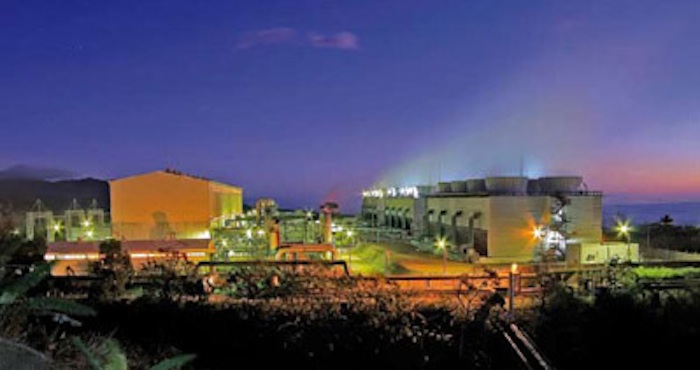Geothermal Energy Development in the Philippines
In this republished post from his blog, Guido Delgado provides a good historical overview on geothermal development in the Philippines.
In this post by Guido Delgado, published on his blog in July 2015, he describes the history of geothermal development in the Philippines. This post is republished with permission.
Geothermal Energy Development in the Philippines, by Guido Delgado
The landscape of the geothermal energy development in the country has changed in recent years due to the privatization of the Energy sector in the country.
Exploration of geothermal energy in the country started somewhere in the 1950s under the helm of Professor Arturo Alcaraz, who headed the Commission of Volcanology. The Commission studied and made an inventory through geological mapping and surveys, and test drilling for the possible sources of geothermal energy.
By 1967, a historic lighting commenced in Tiwi, Albay, signifying the start of the development of geothermal energy in the area and power generation from the new power source commenced in Tiwi in 1979. It was later named as the first water dominated geothermal system that can produce more than 160 megawatts.
Aside from Tiwi, Albay the commission identified other areas where geothermal energy can be harnessed, including Makiling-Banahaw, Maibara, Negros, Leyte, Biliran, and Mindanao.
The government invited the Union Oil Company of California or Unocal for the exploration and development of geothermal energy in the country. The Unocal formed the Philippine Geothermal Inc. (PGI, now known as Chevron) which signed service contracts with the NAPOCOR in 1971. It is useful to stress that under the service contracts entered by the government at that time, the NPC was tasked with building and operating the geothermal plants while the PGI provided technical expertise and minimal capital infusion.
Given the high costs of developing geothermal energy plants, the government decided to develop it without the help of the private sector and created the Philippine National Oil Corporation-Exploration Development Corporation (PNOC-EDC) in 1976. The PNOC-EDC, a GOCC, was tasked to spearhead the development of the said energy resource in 1976.
The declaration of Executive Order 215 allowing the private sector to build and operate power plants and RA 6957 establishing the Build-Operator-Transfer scheme turned to be a game-changer. These laws allowed private entities including foreign ones to finance, construct, operate and maintain power plants for a defined period. The exploration, however, remained with the government. The private sector came in only after the exploration was de-risked.
The Unified Leyte Project was the first project developed under the BOT scheme. The EDC partnered with the California Energy to develop the 588.4-megawatt power plant. The unified power plants have been turned over in 2006 and 2007 to EDC after the 10-year cooperation period has expired.
Fast forward to today, and geothermal exploration and development mechanism in the Philippines have changed.
With the decision of the government to stay away from building and operating power plants or the privatization of the energy sector, development geothermal resources are now up to the private sector with some help of the government. What are the implications of this change?
For one, it is up to the private sector to undertake the exploration of new sources of geothermal energy, whereas, in the past, it was the government that spent and spearheaded exploration activities. The same cannot be said now, as it is the private sector that shells out funds to explore possible geothermal sources, which, by the way, is an expensive undertaking. Test drilling a hole alone–is the riskiest and most expensive phase in the exploration process–can cost $5 million. It is the private sector that shoulders both the cost and, of course, assumes the risk that the exploration activities will not yield any return.
Similarly, as pointed out earlier, it was NPC that provided cash for the building of the geothermal power plants and PGI only provided mostly technical expertise. Again, the same cannot be said for present times, as the private sector spends for the building and operation of the geothermal plants. This is on top of spending for the exploration of possible sources.
Simply put, the government previously assumed the costs from preliminary survey of the areas to operation and maintenance of the plants, whereas now, it is the private sector that assumes all the risks involved in developing geothermal energy.
But this is not to say that the government is idle in the development of geothermal energy in the country. The government, for its part, passed RA 9513: Renewable Energy Act of 2008. This law provides incentives to entities that will develop renewable energy products in the country and there are more sweeteners for geothermal energy development.
Incentives under this act, private include seven years tax holidays, 1.5 percent collection from gross sales of geothermal energy and exemption from universal and transmission charges, among others.
Are the incentives enough to offset the risks undertaken by the private sector? Did the passage of RA 9513 address the needs of renewable energy producers and players? These questions will be answered in a separate post on the blog.
References:
- http://www.ngaphil.org/services/tiwi
- GEOTHERMAL DEVELOPMENT IN THE PHILIPPINES http://www.jogmec.go.jp/content/300199107.pdf
- Geothermal Energy Development in the Philippines with the Energy Development Corporation Embarking into Power Generation by Danilo C. Catigtig


















